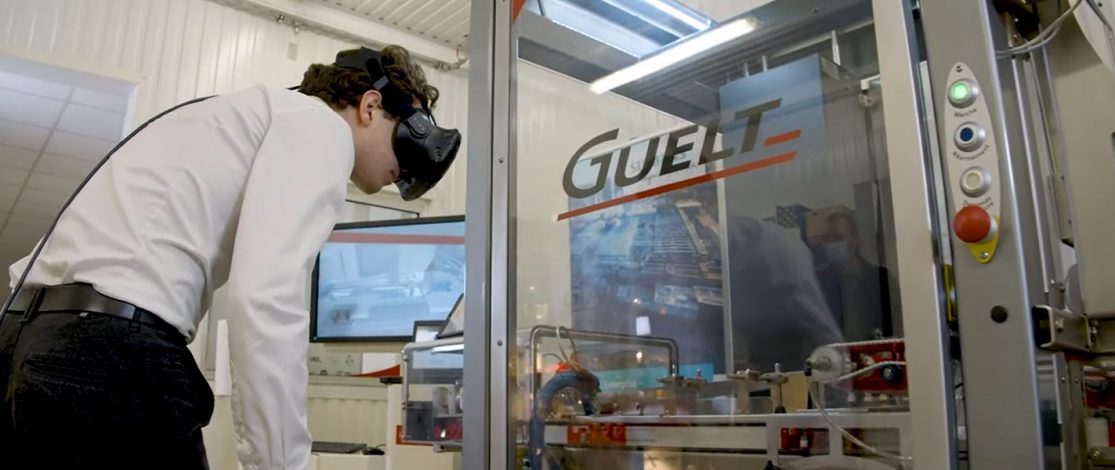The XDE Physics development environment simulates manipulation of and interactions between the components of a digital mockup. Its ability to simulate the dynamics of multi-body systems involving intermittent contacts and other physics (for example, incompressible hydraulic modeling) makes it attractive to a wide range of manufacturers in the automotive, aeronautics, energy, and healthcare industries.
XDE Physics is ideal for simulating handling operations such as the assembly/disassembly of parts, product or process design, workstation studies, scenario preparation, maintenance, and training. It reproduces the interactions of the the rigid, articulated, and soft parts and systems in the digital mockup.
Coupled with interaction devices (virtual or augmented reality headset, joystick, motion capture system, haptic interface), it accurately and realistically reproduces the movements of an operator or robot.
It is used in several industrial products developed by our partners (Technip Energies and Light & Shadows, for example).
of R&D
people
patents
XDE Physics uses agile and efficient techniques to structure the imported data and provide interactive simulations on industrial digital mockups that sometimes include haptic feedback.
The data can come from CAD models or faceted models (tessellated data). Data can also be taken from 3D scans, the latest technique used to capture and “describe” a 3D model. XDE can easily handle the large volume of data produced by a 3D scanner (a point cloud of several billion data points). The tool can also build simulations that combine 3D models (from CAD, for example) and point clouds.
Lastly, XDE can extract metadata (kinematic information, for example) and add semantic information to the digital mockup.
Use cases:
Implementation:
The Stipple plugin, developed with startup Light & Shadows.
We leveraged synergies between our knowledge and know-how to integrate the XDE Physics engine into our software solutions Interact and XR Twin. This innovation solves the issues around the accuracy of physical simulation in a virtual context and is set to revolutionize industry.
While most virtual reality assembly or disassembly simulation tools do not support flexible components or treat them as rigid, XDE Physics uses geometrically accurate 3D beam models to realistically simulate the various mechanical behaviors (bending, torsion, bending/torsion coupling) of beam-type elements, electrical wiring, hoses, and so on. Furthermore, it does this directly within industrial digital mockups and in real time.
Use case examples:

Technip Energies integrates XDE Physics developments into its CETO® product, to study pipeline launching scenarios. All key components are simulated in interactive time: rigid and articulated parts (ship, barge, crane, support), flexible parts (slings, pipe), and sea/swell effects.
To assign an ergonomic rating to a task and assess how arduous a work situation is, conventional tools rely mainly on postural analysis and virtual human simulation using a solely geometric and kinematic approach. XDE Physics goes further and uses biomechanical modeling to simulate the dynamics of the multi-body system—the operator’s avatar—and how it interacts with the environment. The XDE Physics environment uses a whole body motion control approach to observe and quantify the articular efforts involved and how they are distributed over the whole body for a given work situation (load handling, resting, etc.).
Use case examples:
Read more: Immersive Simulation for More Seamless Cobot Integration, CEA-LIST 2019 Activity Report, page 23.

The SEEROB application (Ergonomic Simulation of Work Environments with Collaborative Robots), developed through FactoryLab, provides an immersive simulation of the various challenges associated with integrating a cobot into a production line.
The XDE Physics environment comes with a set of tools for building simulation scenarios and defining interaction metaphors, making it easier for users to develop their business scenarios.
Similarly, the way in which the modules forming a simulation are interconnected offers a wide range of usage configurations: local or remote, with one or more simultaneous users, and with various display options (CAVE™, headsets, etc.), if required.
Lastly, one of the strengths of this environment is that it can be easily coupled with the real world:
Use case examples:

In June 2021 at CFIA (the French food industry suppliers trade show) in Rennes, the CEA presented for the first time a digital twin designed to meet the specific needs of the food industry. Developed in collaboration with Siemens and the equipment manufacturer Guelt, it was integrated into the Usine Agro 4.0 production line presented at the show.